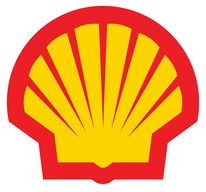

Why the World Worries About Russia’s Nord Stream Pipeline
Gazprom owns the project operator, with Royal Dutch Shell Plc and four other investors contributing half of the 9.5 billion-euro ($11.6 billion) cost. By Feb. 25, 2021 A natural gas pipeline being built under the Baltic Sea from Russia to the German coast is shaking up geopolitics. Nord Stream 2, as it’s called, fuels worries in the U.S. and other countries that the link could give the Kremlin new leverage over Germany and other NATO allies. Pipe construction, halted in 2019, resumed in December 2020, yet U.S. sanctions still threaten to pull the brakes on the project backed by the Russia’s Gazprom PJSC.1. What is Nord Stream 2?
It’s a 1,230-kilometer (764-mile) gas pipeline that will double the capacity of the existing undersea route from Russian fields to Europe — the original Nord Stream — which opened in 2011. Gazprom owns the project operator, with Royal Dutch Shell Plc and four other investors contributing half of the 9.5 billion-euro ($11.6 billion) cost. Initially expected to come online by the end of 2019, the link has been delayed by U.S. sanctions that forced Swiss contractor Allseas Group SA to withdraw its pipelaying vessels when all but 160 kilometers of the link was in place. When Nord Stream 2 started construction again, Russian vessels were deployed to lay 2.6 kilometers in Germany’s exclusive economic zone. In January 2021 work resumed on the Danish section.

 U.S. sanctions… forced Swiss contractor Allseas Group SA to withdraw its pipelaying vessels
U.S. sanctions… forced Swiss contractor Allseas Group SA to withdraw its pipelaying vessels














 Russia has a ship to finish Nord Stream 2
Russia has a ship to finish Nord Stream 2 Berlin convinced: sanctions cannot stop the construction of the last 160 km of Nord Stream 2
Berlin convinced: sanctions cannot stop the construction of the last 160 km of Nord Stream 2 The Solitaire was one of the ships of the Dutch-Swiss offshore company Allseas who worked on the Nord Stream 2. Gas pipeline. Photo: Reuters
The Solitaire was one of the ships of the Dutch-Swiss offshore company Allseas who worked on the Nord Stream 2. Gas pipeline. Photo: Reuters
 Nord Stream 2 contractor, Swiss-Dutch company Allseas, announced on Friday it had suspended pipe-laying activities. Nord Stream 2, which aims to double the Nord Stream route’s existing capacity of 55 billion cubic meters (bcm) of gas a year, is owned by Gazprom, which is financing half of the project worth about 9.5 billion euros ($10.5 billion). Other partners in Nord Stream 2 are Austria’s OMV, the German firms Uniper and Wintershall, Anglo-Dutch energy major Royal Dutch Shell…
Nord Stream 2 contractor, Swiss-Dutch company Allseas, announced on Friday it had suspended pipe-laying activities. Nord Stream 2, which aims to double the Nord Stream route’s existing capacity of 55 billion cubic meters (bcm) of gas a year, is owned by Gazprom, which is financing half of the project worth about 9.5 billion euros ($10.5 billion). Other partners in Nord Stream 2 are Austria’s OMV, the German firms Uniper and Wintershall, Anglo-Dutch energy major Royal Dutch Shell…






 Allseas’ Pioneering Spirit has completed its second platform topsides removal in the North Sea in the last week, as the heavy lift and pipelay vessel removed the 25,000-ton Brent Bravo topsides. Allseas said in a statement that the operation took approximately four hours, from positioning the vessel around the platform to the moment of the lift.
Allseas’ Pioneering Spirit has completed its second platform topsides removal in the North Sea in the last week, as the heavy lift and pipelay vessel removed the 25,000-ton Brent Bravo topsides. Allseas said in a statement that the operation took approximately four hours, from positioning the vessel around the platform to the moment of the lift.
 EBOOK TITLE: “SIR HENRI DETERDING AND THE NAZI HISTORY OF ROYAL DUTCH SHELL” – AVAILABLE ON AMAZON
EBOOK TITLE: “SIR HENRI DETERDING AND THE NAZI HISTORY OF ROYAL DUTCH SHELL” – AVAILABLE ON AMAZON EBOOK TITLE: “JOHN DONOVAN, SHELL’S NIGHTMARE: MY EPIC FEUD WITH THE UNSCRUPULOUS OIL GIANT ROYAL DUTCH SHELL” – AVAILABLE ON AMAZON.
EBOOK TITLE: “JOHN DONOVAN, SHELL’S NIGHTMARE: MY EPIC FEUD WITH THE UNSCRUPULOUS OIL GIANT ROYAL DUTCH SHELL” – AVAILABLE ON AMAZON. EBOOK TITLE: “TOXIC FACTS ABOUT SHELL REMOVED FROM WIKIPEDIA: HOW SHELL BECAME THE MOST HATED BRAND IN THE WORLD” – AVAILABLE ON AMAZON.
EBOOK TITLE: “TOXIC FACTS ABOUT SHELL REMOVED FROM WIKIPEDIA: HOW SHELL BECAME THE MOST HATED BRAND IN THE WORLD” – AVAILABLE ON AMAZON.





















